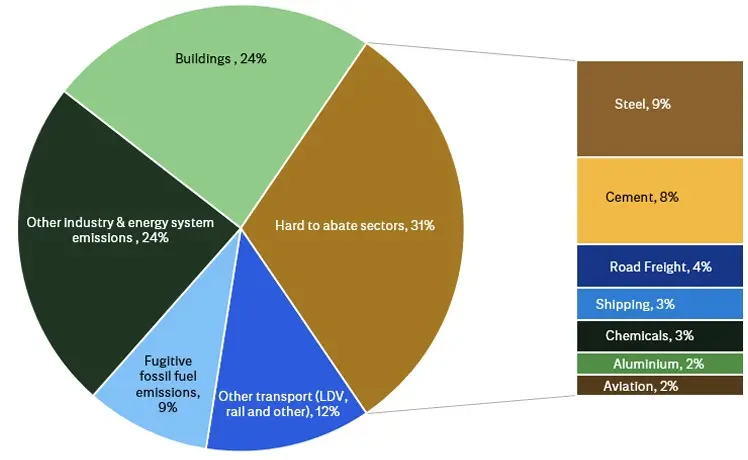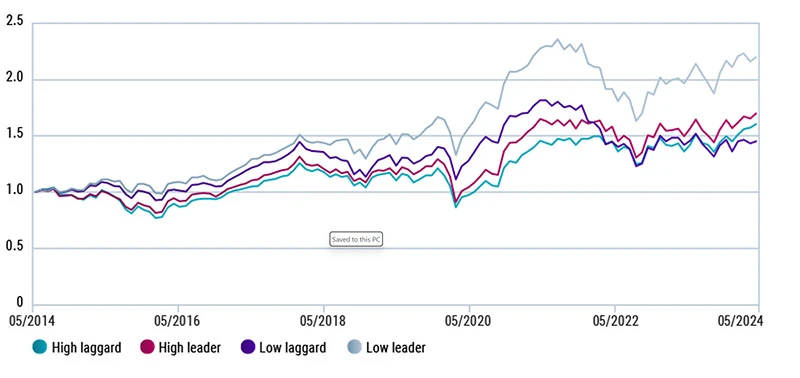Disclaimer
Please read this important information before proceeding further. It contains legal and regulatory notices relevant to the information contained on this website.
The information contained in the Website is NOT FOR RETAIL CLIENTS – The information contained in the Website is solely intended for professional investors, defined as investors which (1) qualify as professional clients within the meaning of the Markets in Financial Instruments Directive (MiFID), (2) have requested to be treated as professional clients within the meaning of the MiFID or (3) are authorised to receive such information under any other applicable laws. The value of the investments may fluctuate. Past performance is no guarantee of future results. Investors may not get back the amount originally invested. Neither Robeco Institutional Asset Management B.V. nor any of its affiliates guarantees the performance or the future returns of any investments. If the currency in which the past performance is displayed differs from the currency of the country in which you reside, then you should be aware that due to exchange rate fluctuations the performance shown may increase or decrease if converted into your local currency.
Robeco Institutional Asset Management UK Limited (“RIAM UK”) markets the Funds of Robeco Institutional Asset Management B.V. (“ROBECO”) to institutional clients and professional investors only. Private investors seeking information about the Robeco Funds should consult with an Independent Financial Adviser. ROBECO will not be liable for any damages or losses suffered by private investors accessing the website.
RIAM UK is an authorised distributor for ROBECO Funds in the UK and has marketing approval for the funds listed on the website, all of which are UCITS Funds. ROBECO is authorised by the AFM and subject to limited regulation by the Financial Conduct Authority.
Many of the protections provided by the United Kingdom regulatory framework may not apply to investments in ROBECO Funds, including access to the Financial Services Compensation Scheme and the Financial Ombudsman Service. No representation, warranty or undertaking is given as to the accuracy or completeness of the information on this website.
If you are not an institutional client or professional investor, you should therefore not proceed. By proceeding, please note that we will be treating you as a professional client for regulatory purposes and you agree to be bound by our terms and conditions.
If you do not accept these terms and conditions, as well as the terms of use of the website, please do not continue to use or access any pages on this website.
Sustainable investing
Transition finance
Transition finance invests in less sustainable companies to help them adopt lower-carbon and more nature-positive practices. Unlike sustainable investing, which focuses on ‘green’ companies, transition finance targets those progressing from ‘brown’ to ‘green.’
It is often said that if net zero is the destination, then transition is the journey. Transition investing is the principal means of achieving net zero emissions in order to meet the Paris Agreement temperature goals and limit global warming.
This is where the real change is taking place as companies and sectors adjust their processes. Transition investing opens up opportunities for investments in industries where emissions are hard to abate, such as steel or cement, which would not be covered by pure SI.
Hard-to-abate sectors are responsible for one-third of energy-related greenhouse gas emissions

Source: Citi GPS, Mission Possible
The three pillars of transition finance
Transition finance is guided by three inter-related pillars: climate, nature and social development. It offers investible opportunities in a wide range of areas, led by climate and nature:
Climate: Opportunities range from switching from fossil fuels to renewable energy, to changing industrial processes, developing green steel and low-carbon cement, plus carbon capture technology.
Nature: Projects include reducing pollution and waste, using less packaging, adopting more recycling and more land use-efficient products, thereby reducing resource intensity and pressure on land and sea.
Social development: This is necessary to ensure a Just Transition so that workers in sectors such as coal mining who will be displaced can get new jobs in more sustainable industries, such as moves in Egypt to replace fuel price subsidies with food stipends. Transition finance here is more of an issue for governments than for investors.1
Investors can adopt transition finance while also generating attractive returns by tapping into a broad set of asset classes. This includes the regular listed equites of transitional companies, corporate bonds (credits), sovereign bonds of progressive countries, and green, social and sustainability (GSS) bonds. Many investment strategies now directly target the transition, climate change and net zero.

Companies that are leading the transition (the top two lines) generate better returns than the laggards (bottom two lines). The high leaders are in high-emission sectors that are transitioning well. The low leaders are in the low-emission sectors where transition is less of an issue. Source: Robeco
Paris-aligned benchmarks
In order to meet net zero by 2050, companies need to decarbonize on average by 7% a year. Investing in strategies that target this has been greatly assisted by the launch of Paris-aligned benchmarks that follow clear trajectories to achieve this. Robeco now has strategies that align with this 7% annual decarbonization target. We also use engagement where necessary to encourage companies to step up their net zero efforts.
One issue that has emerged in transition investing – and in ESG or pure-play sustainable investing in general – is the need to procure forward-looking rather than backward-looking data. This has become the new ‘holy grail’ of data, as emissions statistics, for example, only offer a snapshot into the past. Robeco has developed a framework to identify transition opportunities using such forward-looking metrics.
Much of the focus on transition investing has been in Asia, which accounts for 60% of the global population and 93% of the rise in carbon emissions over the past ten years. Several investment strategies including three at Robeco therefore specifically target Asian transition opportunities.
Footnote
1 https://www.iisd.org/articles/just-transition-examples
















